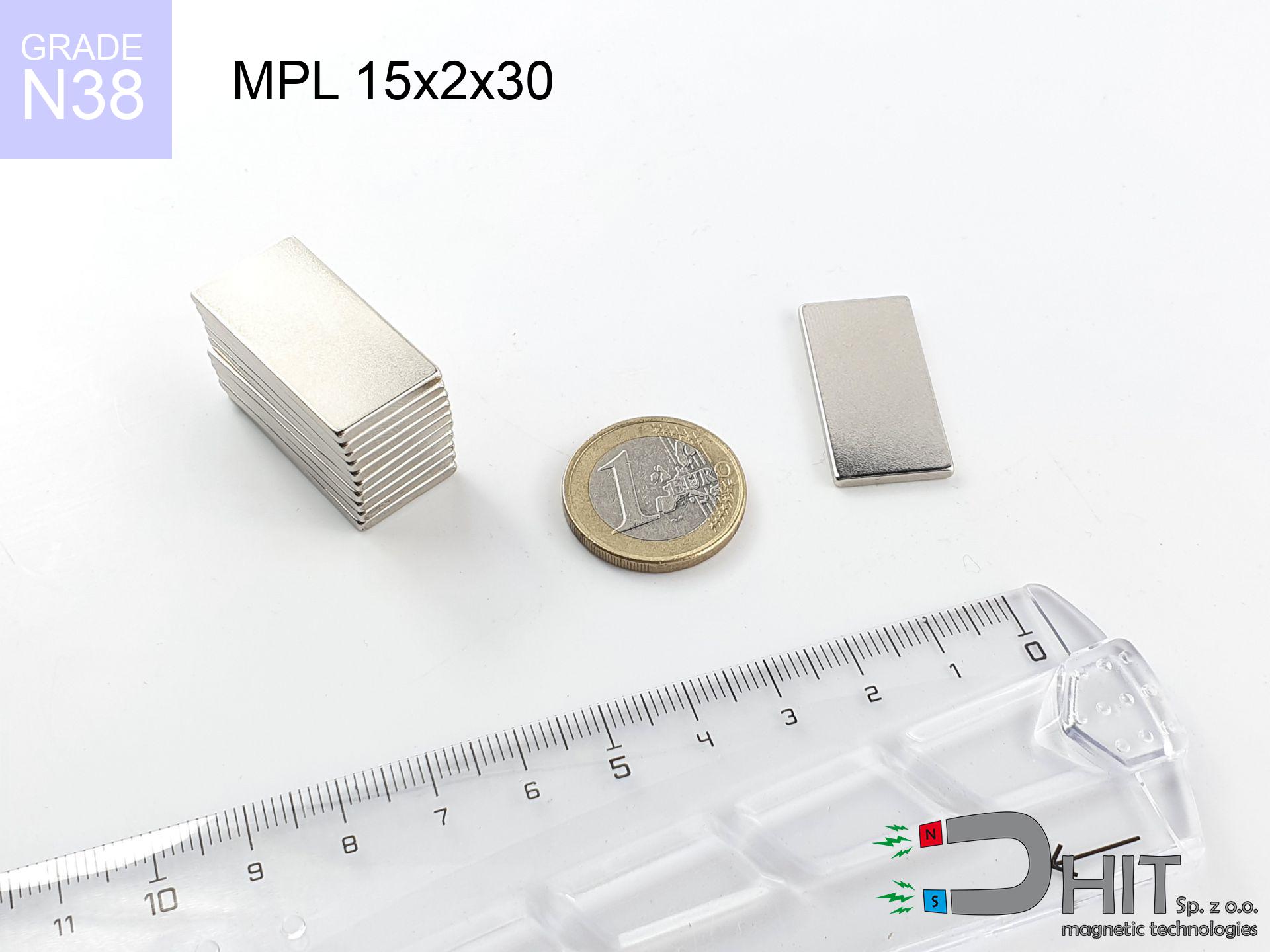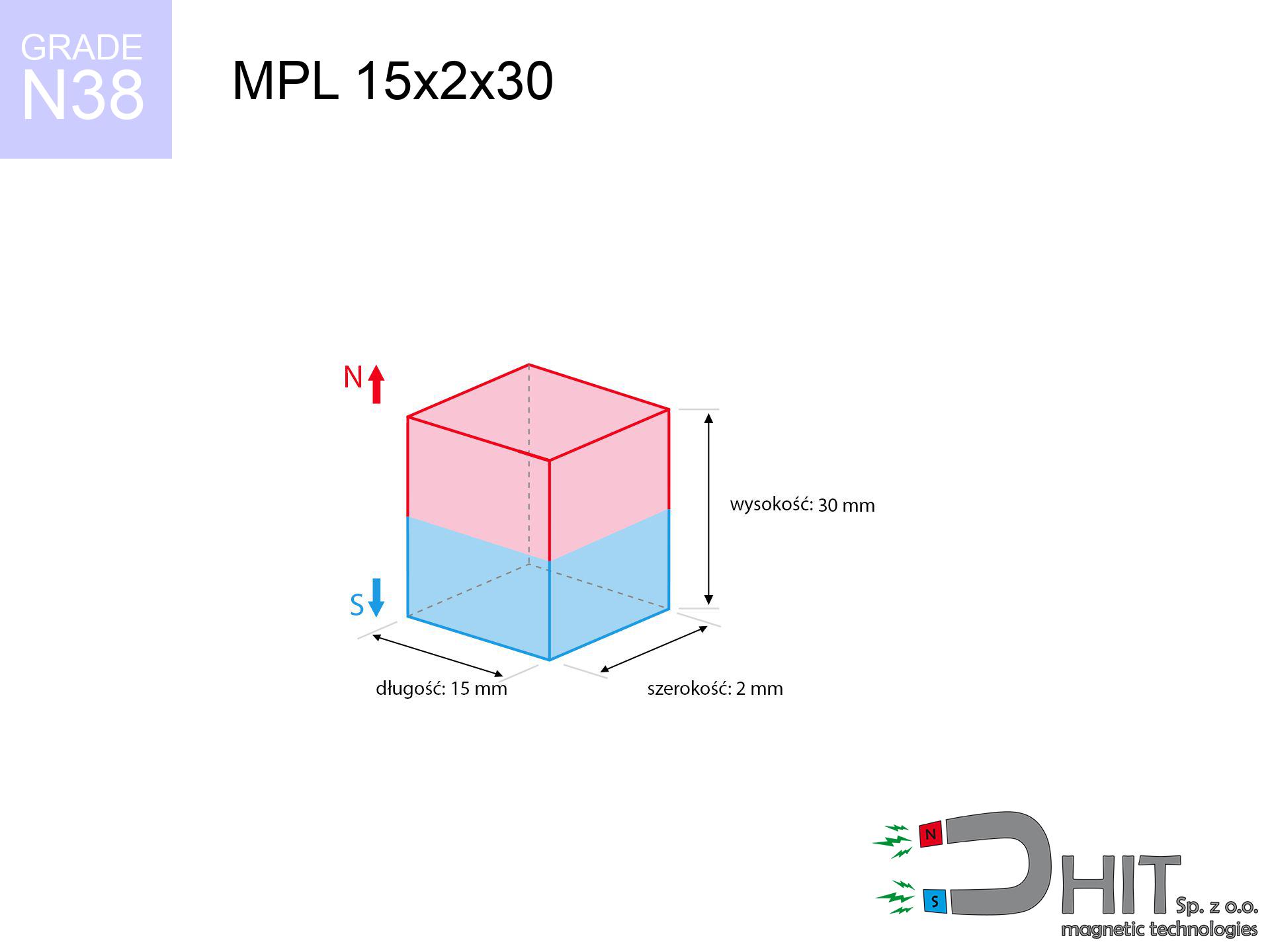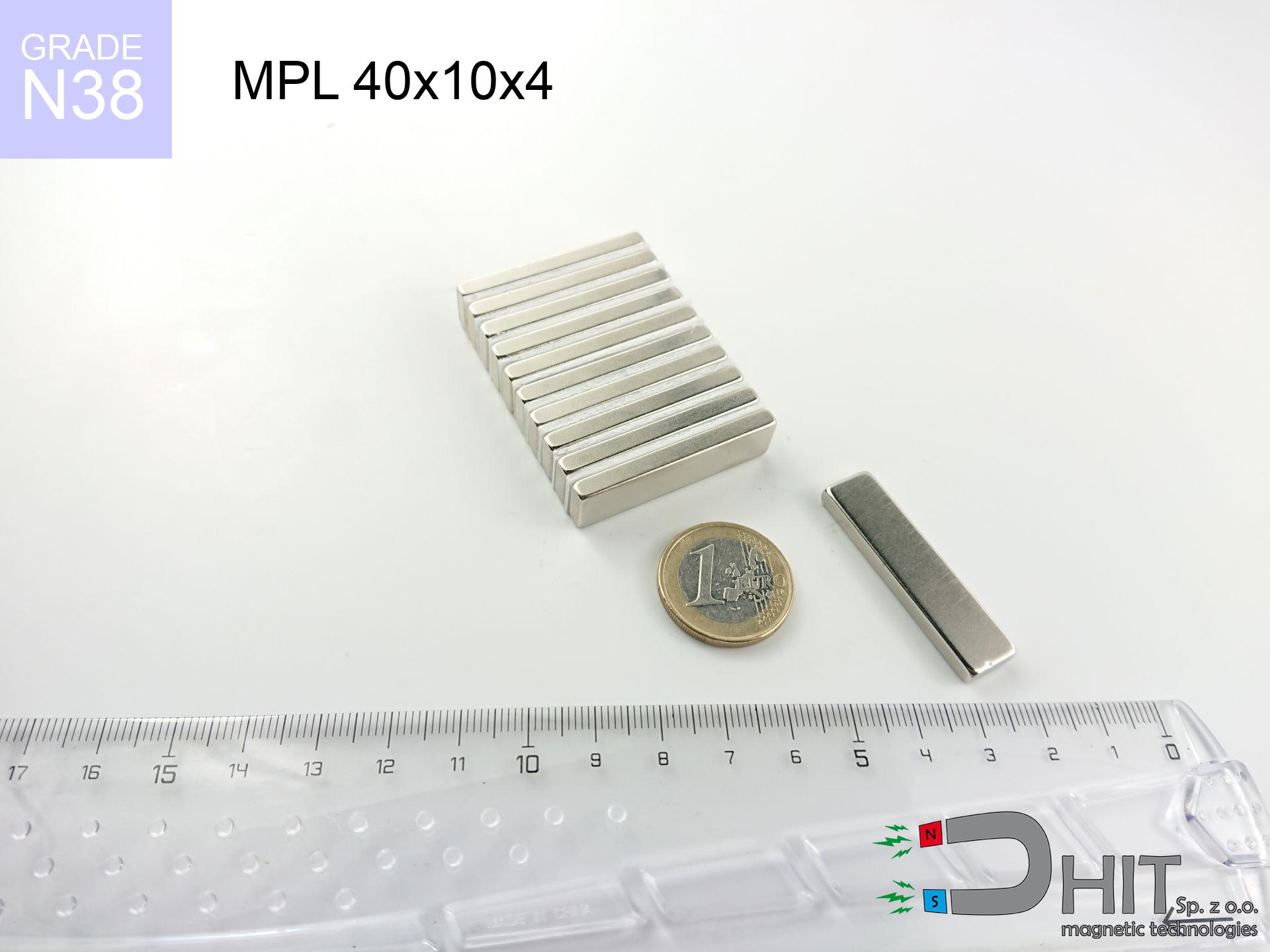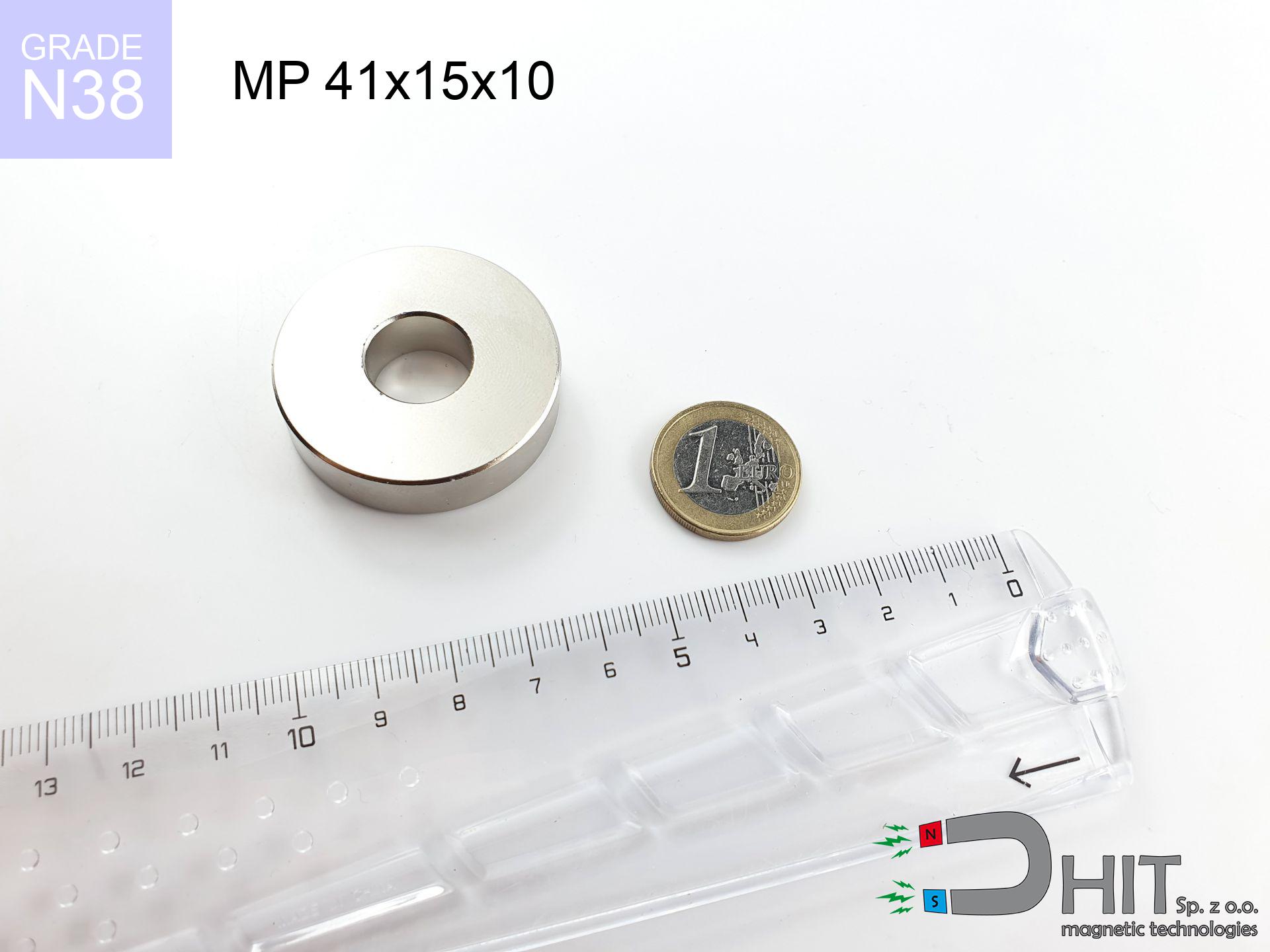MPL 15x2x30 / N38 - lamellar magnet
lamellar magnet
Catalog no 020121
GTIN: 5906301811275
length [±0,1 mm]
15 mm
Width [±0,1 mm]
2 mm
Height [±0,1 mm]
30 mm
Weight
6.75 g
Magnetization Direction
→ diametrical
Load capacity
2.73 kg / 26.77 N
Magnetic Induction
614.34 mT
Coating
[NiCuNi] nickel
4.75 ZŁ with VAT / pcs + price for transport
3.86 ZŁ net + 23% VAT / pcs
bulk discounts:
Need more?Not sure what to buy?
Pick up the phone and ask
+48 888 99 98 98
otherwise send us a note using
form
the contact section.
Parameters as well as form of a magnet can be verified using our
magnetic calculator.
Order by 14:00 and we’ll ship today!
MPL 15x2x30 / N38 - lamellar magnet
Magnetic properties of material N38
Physical properties of NdFeB
Shopping tips
Advantages as well as disadvantages of neodymium magnets NdFeB.
Besides their magnetic performance, neodymium magnets are valued for these benefits:
- Their strength remains stable, and after around ten years, it drops only by ~1% (theoretically),
- Their ability to resist magnetic interference from external fields is among the best,
- The use of a mirror-like gold surface provides a refined finish,
- They have extremely strong magnetic induction on the surface of the magnet,
- Thanks to their exceptional temperature resistance, they can operate (depending on the form) even at temperatures up to 230°C or more,
- With the option for tailored forming and precise design, these magnets can be produced in various shapes and sizes, greatly improving application potential,
- Significant impact in advanced technical fields – they are utilized in computer drives, rotating machines, medical equipment or even sophisticated instruments,
- Compactness – despite their small size, they generate strong force, making them ideal for precision applications
Disadvantages of magnetic elements:
- They may fracture when subjected to a powerful impact. If the magnets are exposed to shocks, we recommend in a protective enclosure. The steel housing, in the form of a holder, protects the magnet from damage and reinforces its overall strength,
- Magnets lose magnetic efficiency when exposed to temperatures exceeding 80°C. In most cases, this leads to irreversible power drop (influenced by the magnet’s form). To address this, we provide [AH] models with superior thermal resistance, able to operate even at 230°C or more,
- Magnets exposed to humidity can degrade. Therefore, for outdoor applications, we advise waterproof types made of rubber,
- The use of a protective casing or external holder is recommended, since machining fine details in neodymium magnets is restricted,
- Health risk linked to microscopic shards may arise, in case of ingestion, which is important in the context of child safety. Moreover, small elements from these magnets have the potential to disrupt scanning when ingested,
- In cases of tight budgets, neodymium magnet cost may be a barrier,
Best holding force of the magnet in ideal parameters – what contributes to it?
The given pulling force of the magnet represents the maximum force, assessed in the best circumstances, that is:
- with the use of low-carbon steel plate serving as a magnetic yoke
- with a thickness of minimum 10 mm
- with a polished side
- with zero air gap
- under perpendicular detachment force
- in normal thermal conditions
Practical aspects of lifting capacity – factors
In practice, the holding capacity of a magnet is conditioned by these factors, in descending order of importance:
- Air gap between the magnet and the plate, because even a very small distance (e.g. 0.5 mm) causes a drop in lifting force of up to 50%.
- Direction of applied force, because the maximum lifting capacity is achieved under perpendicular application. The force required to slide the magnet along the plate is usually several times lower.
- Thickness of the plate, as a plate that is too thin causes part of the magnetic flux not to be used and to remain wasted in the air.
- Material of the plate, because higher carbon content lowers holding force, while higher iron content increases it. The best choice is steel with high magnetic permeability and high saturation induction.
- Surface of the plate, because the more smooth and polished it is, the better the contact and consequently the greater the magnetic saturation.
- Operating temperature, since all permanent magnets have a negative temperature coefficient. This means that at high temperatures they are weaker, while at sub-zero temperatures they become slightly stronger.
* Holding force was tested on a smooth steel plate of 20 mm thickness, when the force acted perpendicularly, in contrast under parallel forces the holding force is lower. Moreover, even a minimal clearance {between} the magnet’s surface and the plate lowers the holding force.
Precautions
Neodymium magnets are among the most powerful magnets on Earth. The surprising force they generate between each other can shock you.
Please review the information on how to handle neodymium magnets and avoid significant harm to your body, as well as prevent unintentional damage to the magnets.
Neodymium magnets can attract to each other, pinch the skin, and cause significant injuries.
Magnets attract each other within a distance of several to around 10 cm from each other. Remember not to put fingers between magnets or in their path when they attract. Depending on how massive the neodymium magnets are, they can lead to a cut or alternatively a fracture.
Neodymium magnets should not be near people with pacemakers.
Neodymium magnets produce strong magnetic fields that can interfere with the operation of a heart pacemaker. However, if the magnetic field does not affect the device, it can damage its components or deactivate the device when it is in a magnetic field.
Dust and powder from neodymium magnets are flammable.
Do not attempt to drill into neodymium magnets. Mechanical processing is also not recommended. If the magnet is crushed into fine powder or dust, it becomes highly flammable.
Neodymium magnets can become demagnetized at high temperatures.
Although magnets have shown to retain their effectiveness up to 80°C or 175°F, this temperature may vary depending on the type of material, shape, and intended use of the magnet.
Keep neodymium magnets away from TV, wallet, and computer HDD.
Magnetic fields generated by neodymium magnets can damage magnetic storage media such as floppy disks, credit cards, magnetic ID cards, cassette tapes, video tapes, or other similar devices. They can also damage televisions, VCRs, computer monitors, and CRT displays. You should especially avoid placing neodymium magnets near electronic devices.
Keep neodymium magnets as far away as possible from GPS and smartphones.
Neodymium magnets are a source of strong magnetic fields that cause interference with magnetometers and compasses used in navigation, as well as internal compasses of smartphones and GPS devices.
Maintain neodymium magnets away from youngest children.
Neodymium magnets are not toys. Be cautious and make sure no child plays with them. Small magnets can pose a serious choking hazard. If multiple magnets are swallowed, they can attract to each other through the intestinal walls, causing significant injuries, and even death.
Avoid contact with neodymium magnets if you have a nickel allergy.
Studies show a small percentage of people have allergies to certain metals, including nickel. An allergic reaction often manifests as skin redness and rash. If you have a nickel allergy, you can try wearing gloves or simply avoid direct contact with nickel-plated neodymium magnets.
Magnets made of neodymium are particularly delicate, resulting in shattering.
In the event of a collision between two neodymium magnets, it can result in them getting chipped. They are coated with a shiny nickel plating similar to steel, but they are not as hard. In the case of a collision between two magnets, there can be a scattering of small sharp metal fragments in different directions. Protecting your eyes is essential.
Caution!
In order for you to know how strong neodymium magnets are and why they are so dangerous, read the article - Dangerous very strong neodymium magnets.









